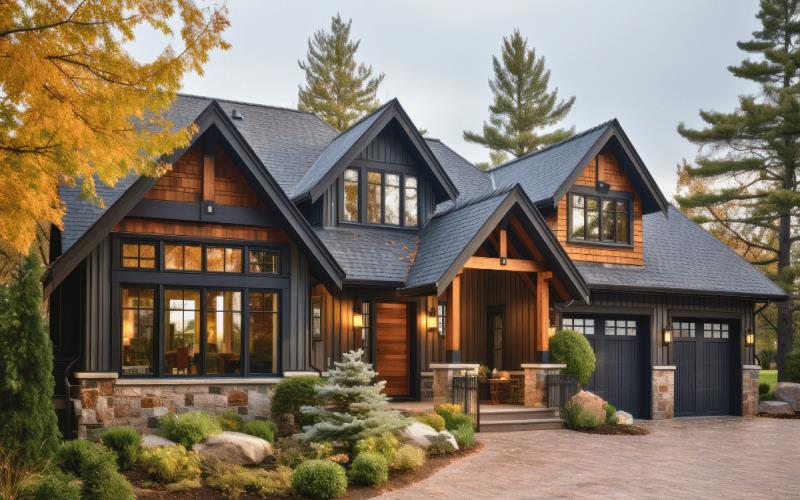Introduction to Siding Essentials
The aesthetic harmony and protective shell provided by siding are paramount aspects of any dwelling’s exterior. Not only does it frame the visual narrative of a home, but it also bears the critical task of safeguarding against climatic adversities. The material, color, and texture are all decisive factors in the grit and appeal of siding. Hence, consultation with a knowledgeable siding contractor is beneficial for any homeowner looking to enhance or preserve their abode. Properties clad with appropriate siding materials can achieve a striking appearance while withstanding the tests of time and nature.
When exploring siding options, owners must consider how their choices will harmonize with the existing architectural elements. While the visual aspect of siding is indeed significant, its functional qualities, such as water resistance, insulation, and durability, must be considered. A properly chosen and installed siding can be the difference between a weather-tight, energy-efficient home and one that suffers from drafts and moisture problems.
Installation Insights: Ensuring Long-lasting Performance
The siding tale has a crucial part called installation. Poor application can cause premature wear, performance problems, and even structural damage to your property. Selecting a trustworthy siding contractor, like Colorado Roofing Company, who possesses the necessary skills and is acquainted with the local building codes can be crucial to having a facade that endures harsh weather conditions.
A professional installation involves meticulous attention to detail to guarantee that every panel, shingle, or board is appropriately aligned and secured. It starts with a thorough inspection of the home’s current state. A skilled contractor will also be familiar with the latest installation techniques and products, such as weather-resistant barriers and flashing, that can extend the siding’s life and enhance its performance.
Choosing the Right Material for Your Home’s Siding
The choice of material for your home’s siding is critical, with each option presenting its unique characteristics. Traditional wood siding requires constant care since it can rot and draw insects, even though it looks timeless and can be painted or stained to complement any color scheme. Vinyl siding, meanwhile, is low-maintenance, cost-efficient, and comes in a variety of styles and colors. Because it can mimic wood siding without the disadvantages and is robust and fire-resistant, fiber cement siding is widely used. Metal siding, frequently composed of steel or aluminum, offers an incredibly resilient and fire-resistant option typically preferred in areas with extreme weather exposure. Each material’s attributes, such as longevity, ecological impact, and maintenance requirements, should be carefully assessed against the homeowner’s priorities and the local environmental conditions.
Determining the suitable material invariably includes considerations for the local environment, personal style preferences, and the initial installation and ongoing maintenance budget. As trends and technologies in siding materials evolve, homeowners have a growing range of options, ensuring a perfect fit for every home’s unique needs and the owner’s vision.
The Evolution of Siding Materials Over the Years
Examining the history of siding materials unveils a fascinating progression governed by the quest for durability, maintenance ease, and aesthetic diversity. From the rugged charm of hand-cut wood shingles to futuristic composites, the journey of siding reflects humanity’s enduring relationship with shelter and the external façade of our living spaces. Modern materials such as engineered vinyl and fiber cement offer homeowners options that are robust, energy-efficient, and capable of embodying various design preferences.
In recent decades, technological advances have brought forward innovations such as insulated vinyl and composite materials that combine polymers with recycled wood pulp, each striving to enhance siding products’ performance and environmental sustainability. These contemporary solutions benefit more from increased resistance to common problems such as rot, pests, and fire, allowing homeowners greater peace of mind.
The Impact of Siding on Home Energy Efficiency
Often overlooked concerning its functional role, siding significantly impacts a home’s energy efficiency. Well-executed siding provides a shield to prevent the loss of conditioned air, bolstering a home’s defense against temperature extremes. The choice of siding material and its installation quality determine its insulation properties and, by extension, the comfort level within the home. Integrating energy efficiency into siding systems has gained traction as homeowners become more environmentally conscious and seek to reduce utility costs. Material decisions can indeed wield a substantial influence on a home’s overall eco-friendliness.
Insulated siding options, for example, bolster the thermal envelope, helping homeowners maintain steady indoor temperatures and lower energy consumption.
Siding and Safety: Protection Against the Elements
While aesthetics are essential, the siding must foremost serve as a home’s shield against Mother Nature’s whims. Top-tier materials are primed to withstand intense ultraviolet rays, biting cold, scorching heat, pounding hail, and whipping winds. Moreover, certain siding materials offer additional safety benefits, including enhanced fire resistance, which is paramount in fire-prone regions.
Local building codes often dictate specific requirements for siding to resist common regional threats such as hurricanes or earthquakes. In areas with high precipitation, siding that resists water infiltration is a must to prevent mold and structural damage. Even within the same material category, some products are engineered to meet these location-specific challenges more effectively than others.

